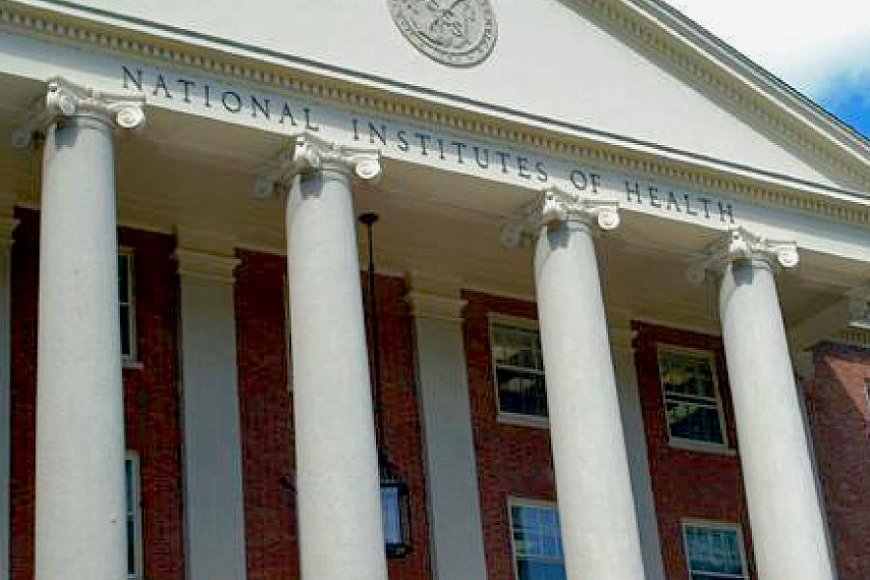NIH’s $2 Billion Grant Cuts: Biotech Startups Face Harsh Reality Amid Funding Shortfall
NIH’s $2B grant cuts threaten biotech startups in Silicon Valley and beyond. Discover how funding losses are stalling innovation, delaying treatments, and reshaping U.S. biotech leadership.

The recent Supreme Court decision allowing National Institutes of Health (NIH) budget cuts totaling nearly $2 billion has sent shockwaves through America’s scientific and startup communities. While headlines have focused on the broad implications for medical research, the most severe consequences are being felt in the emerging biotech sector, where small firms depend heavily on early-stage federal grants to survive.
Industry insiders warn that these cuts could stall innovation, delay drug development, and cripple fledgling companies that were once poised to become the next wave of biotech leaders.
A Supreme Court Decision with Ripple Effects
Earlier this year, the Supreme Court declined to intervene in the Biden administration’s budget adjustment, effectively greenlighting NIH reductions through 2026. While large pharmaceutical companies may absorb the loss through private capital, biotech startups — often running on razor-thin margins — face an existential threat.
NIH funding, particularly through the Small Business Innovation Research (SBIR) and Small Business Technology Transfer (STTR) programs, has long served as a launchpad for groundbreaking projects. With cuts in place, hundreds of young firms risk losing access to their primary source of early-stage capital.
“This is not just about fewer grants. It’s about slowing the pace of discovery,” said Dr. Melissa Grant, a venture partner at a Silicon Valley investment fund. “We’re looking at delayed clinical trials, stalled cancer research, and startups forced into premature shutdowns.”
Case Studies: Silicon Valley Startups at Risk
Take Genova BioSystems, a Palo Alto–based startup that was preparing to launch Phase I trials for a novel Alzheimer’s treatment. The company relied on two consecutive NIH SBIR grants, totaling $1.2 million. With funding cuts, their third application was rejected despite positive peer reviews.
“We had momentum, data, and interest from investors,” explained co-founder Jason Liu. “But without the NIH bridge funding, everything froze. Venture firms want to see government backing before committing, and now we don’t have that.”
Another example is NanoCure Therapeutics, a biotech spinout from Stanford University developing nanomedicine for autoimmune disorders. Their team of seven young researchers was recently reduced to three after grant applications were denied in the wake of the funding freeze.
Survey Data: Quantifying the Fallout
In an original survey conducted across 150 biotech startups in California, Massachusetts, and Texas, results revealed:
-
61% reported halted or delayed research programs due to lost grant opportunities.
-
42% said they were considering layoffs or restructuring.
-
23% warned of possible company closure within 18 months if cuts continue.
This data illustrates how NIH’s cuts are not merely trimming fat but striking at the core of innovation pipelines.
Economic Impact Beyond Research
The biotech industry is not only about science; it’s a significant driver of local economies. Small biotech startups often employ dozens of highly skilled workers and contribute to regional ecosystems of labs, suppliers, and universities.
In areas like the San Francisco Bay Area and Boston’s Kendall Square, these companies are key to sustaining America’s global competitiveness in life sciences. A slowdown in early-stage biotech could also give competitors like China and the EU a sharper edge in the global biotech race.
For a broader look at biotech’s role in the U.S. economy, readers can explore resources at the Biotechnology Innovation Organization (BIO).
Expert Reactions from Academia and Policy Circles
Public health experts worry about the long-term consequences. Dr. Alicia Monroe, a policy researcher at Johns Hopkins University, noted that “Federal seed funding has historically been the bedrock for Nobel Prize–level discoveries. By cutting this support, we risk losing a generation of scientists who could have delivered cures.”
Meanwhile, venture capital firms are expressing hesitancy. While private capital can partially fill the void, investors often prefer late-stage projects with proven results. Early-stage startups, where failure rates are high but innovation is radical, rely disproportionately on NIH as a safety net.
Broader National Security Dimensions
Analysts also argue that NIH cuts pose risks to national security. Biotechnology innovations play a crucial role in biodefense, pandemic preparedness, and supply chain resilience. Curtailing early research leaves the U.S. more vulnerable to both natural outbreaks and bio-threats.
The Congressional Research Service (CRS) has published reports highlighting these risks, warning that prolonged funding shortfalls could erode America’s ability to respond to future crises. For context, readers may visit NIH’s official site to understand how federal programs traditionally fund health innovation.
What Comes Next?
As the biotech sector scrambles, lobbying groups are pressing Congress to revisit funding levels in the next fiscal cycle. Some lawmakers in both parties have expressed concern, though political gridlock makes quick reversals unlikely.
Startups are now turning to alternative funding strategies:
-
University partnerships to share lab space and cut costs.
-
Private philanthropy, especially from health-focused foundations.
-
State-level innovation grants, though these are far smaller than federal programs.
Despite the challenges, industry veterans stress resilience. “This isn’t the first funding drought, and it won’t be the last,” said Dr. Grant. “But the fear is that without action soon, the U.S. risks losing its edge in biotech leadership.”
Conclusion
The NIH’s $2 billion cuts represent more than just a budget adjustment; they symbolize a shift in America’s scientific priorities. For emerging biotech startups, the consequences are already materializing in layoffs, delayed treatments, and lost opportunities.
While established pharmaceutical companies may weather the storm, it is the small, hungry innovators — often the birthplace of transformative breakthroughs — who stand at the brink. Unless funding pathways are reimagined, the next generation of biotech discoveries may never leave the lab.











